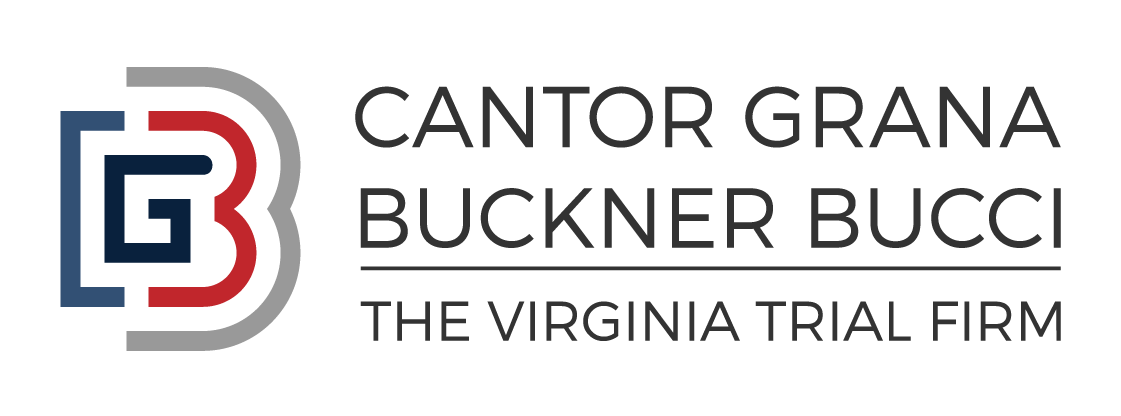What Should I Do After a Hit-and-Run Accident in Virginia?
In a perfect world, all drivers would take responsibility for negligent actions, and no one would ever be left wondering what to do after a hit-and-run accident. Unfortunately, these types of incidents happen far more often than you may realize.
When the at-fault drivers flee accident scenes, victims have to deal with the complicated and stressful auto insurance claims process. Having an experienced car accident attorney can help you navigate through this difficult time and ensure that you receive fair compensation for your damages.
If you or a loved one has been involved in a hit-and-run accident, don’t face the challenges alone. The dedicated car accident lawyers at Cantor Grana Buckner Bucci are here to help you seek compensation for your losses.
With extensive experience in handling car accident cases, we will fight to ensure you receive the justice and compensation you deserve. Schedule a free consultation today and take the first step toward protecting your rights. Contact us now to get started!
What Should I Know About Hit-and-Run Accidents in Virginia?
In Virginia, hit-and-run accidents occur more often than many realize and are treated as serious offenses under the law. Drivers involved in an accident are legally required to stop at the scene, provide their information, and assist injured parties if necessary. Failing to do so can result in a hit-and-run charge that can carry severe criminal penalties, including fines, license suspension, and even imprisonment. For victims, it can be overwhelming to figure out the next steps, especially when the responsible party is not immediately identified.
If you are involved in a hit-and-run accident in Virginia, it’s crucial to take the right steps to protect yourself. First, prioritize your safety by ensuring you and any passengers are out of harm’s way.
Next, report the incident to law enforcement promptly, as the accident report can be critical in documenting the details of the accident. Try to gather as much evidence as possible, such as photos of the scene, damage to your vehicle, and any information about the fleeing vehicle, like its make, model, or license plate number. Witness testimonies can also be vital in identifying the at-fault driver.
Does Insurance Cover Hit-and-Run Accidents in Virginia?
Some insurance covers hit-and-run accidents in Virginia, but it largely depends on the specifics of your policy. Most auto insurance policies include uninsured motorist (UM) coverage, which can protect you in cases where the at-fault driver cannot be identified. This coverage may help pay for medical expenses, property damage, and other associated costs caused by the incident. However, the extent of uninsured motorist coverage can vary depending on the limits set in the policy by your insurance provider.
It’s important to review your insurance policy carefully to ensure you have adequate collision coverage in case of a hit-and-run. Additionally, promptly reporting the accident to your insurance company and providing them with any evidence you’ve collected can help ensure your claim is processed smoothly. Reaching out to an experienced attorney might also be beneficial if you encounter challenges with your insurance claim or need guidance navigating the aftermath of the accident.
Is Personal Injury Protection Insurance Required in Virginia?
Personal Injury Protection (PIP) insurance is not required in Virginia. Unlike some states that mandate PIP coverage as part of a no-fault insurance system, Virginia operates under an at-fault system for auto accidents. This means that the driver determined to be at fault for the accident is responsible for covering the damages and injuries sustained by others.
While PIP insurance is not required in Virginia, it can still be beneficial to explore additional coverage options. Medical payments coverage, often referred to as MedPay, is a popular alternative that can help cover medical expenses for you and your passengers regardless of who is at fault. Speak with your insurance company to better understand the available options and ensure you have the necessary protection to address potential healthcare costs following an accident. Investing in the right coverage can provide greater peace of mind and financial security.
What Are Some Dos and Don’ts After a Hit-and-Run Accident?
Being involved in a hit-and-run crash can be a stressful and overwhelming experience, especially in Virginia, where specific laws govern these situations. Knowing the right steps to take—and the mistakes to avoid—can make a significant difference in protecting your legal rights and ensuring your safety. By understanding the dos and don’ts of handling a hit-and-run, you can respond effectively and minimize potential complications.
Dos After a Hit-and-Run Accident
- Remain Calm and Stay Safe
Your safety is the top priority. Ensure that you are out of harm’s way by moving to a safe location if possible. Panicking can make the situation worse, so take a moment to collect yourself before taking action.
- Document the Scene
Take photos or videos of the accident scene, damage to your vehicle, and any surroundings that might provide context, such as skid marks or nearby traffic signs. This documentation can serve as crucial evidence later.
- Gather Information
If there are witnesses, request their contact information and ask for their account of what they saw. Their testimonies can add weight to your case.
- Report to Law Enforcement
Filing a police report is vital. Provide as many details as possible about the incident, including a description of the other vehicle, license plate details (if any), and the time and location of the accident.
Don’ts After a Hit-and-Run Accident
- Don’t Chase the Other Driver
While it may feel instinctive to follow the fleeing driver, this can lead to further danger or complicate the situation. Focus instead on collecting evidence and ensuring your own safety.
- Don’t Delay Reporting
Waiting too long to report the incident to law enforcement or your insurance company can weaken your case. Prompt action helps ensure that all relevant details are fresh and can be acted upon.
- Don’t Admit Fault
Avoid making statements to anyone that could be interpreted as an admission of fault. Even innocent comments can be misconstrued and harm your claim.
How Are Hit-and-Run Drivers Identified?
Law enforcement agencies often utilize a combination of evidence and investigative tools to identify hit-and-run drivers. Surveillance footage from nearby traffic cameras, businesses, or residential areas can provide crucial visuals of the fleeing vehicle. Additionally, physical evidence left at the scene, such as paint chips, broken car parts, or tire marks, might help to track down the offender.
Witness accounts are invaluable, as they can provide descriptions of the vehicle or other driver. Social media and community involvement also play a growing role, with many individuals sharing incident details online to aid in the search. Advanced technology, like license plate recognition systems, further enhances authorities’ ability to pinpoint suspects quickly and accurately.
What Evidence is Needed for a Hit-and-Run Claim?
When pursuing a hit-and-run claim, gathering the right evidence is essential to support your case and ensure a successful outcome. Strong evidence can help identify the at-fault party, demonstrate damages, and establish liability. This often includes documentation of the scene, witness testimony, and any records from law enforcement or surveillance systems. Properly collected evidence strengthens your position and allows insurance companies or legal authorities to assess the situation accurately.
- Photographs of the Scene: Capture clear images of the accident scene, including vehicle damage, debris, skid marks, and any other relevant details. These can provide visual proof of what occurred.
- Witness Statements: Collect contact information and detailed accounts from any witnesses present at the scene to strengthen your claim with unbiased perspectives.
- Police Report: Obtain the official report filed by law enforcement, as it serves as a crucial piece of documentation detailing the incident.
- Surveillance Footage: Check for security cameras or traffic cameras in the area that may have captured the incident or the fleeing vehicle.
- Medical Records: Keep a record of any injuries sustained in the incident, including diagnoses, treatment plans, and medical bills, to establish physical and financial damages.
- Vehicle Repair Estimates: Provide documentation of repair costs or vehicle valuation to demonstrate the extent of property damage.
- License Plate Information (if available): Note down or take a picture of the license plate of the fleeing vehicle, as it can help locate the offender.
Why Should I Hire an Attorney to Help After a Hit-and-Run in Virginia?
Hiring an attorney after a hit-and-run in Virginia can significantly strengthen your case and improve your chances of receiving fair compensation. An experienced attorney can help you understand your legal rights, guide you through the claims process, and handle communications with insurance companies. They can also investigate the incident by working with authorities, collecting evidence, and identifying the liable party if possible.
Furthermore, attorneys are skilled in negotiating settlements and, if necessary, representing you in court to ensure you receive the compensation you deserve for medical bills, property damage, lost wages, and emotional distress. By enlisting the help of a qualified attorney, you can focus on recovery while leaving the legal complexities of a personal injury lawsuit to a professional.
Which Law Firm Should I Turn to For a Hit-and-Run in Virginia?
When it comes to choosing a law firm for your hit-and-run case in Virginia, Cantor Grana Buckner Bucci stands out as a trusted and experienced option. With a proven track record of success in handling complex personal injury cases, our team of skilled hit-and-run attorneys is dedicated to providing personalized attention and aggressive representation.
Whether the case involves intricate investigations or negotiations with insurance companies, our personal injury lawyers have the expertise to ensure your rights are protected. Our commitment to achieving the best possible outcome for all clients makes us a top choice for pursuing justice and seeking compensation after a hit-and-run incident.
If you or a loved one has been a victim of a hit-and-run accident, don’t hesitate to reach out to our experienced legal team. We offer a free consultation to discuss your case, answer any questions, and help you understand your legal options. Contact us today.











